Member Assembly at Annual Meeting Focuses on “What’s Happening at ASME”
Member Assembly at Annual Meeting Focuses on “What’s Happening at ASME”
June 15, 2018
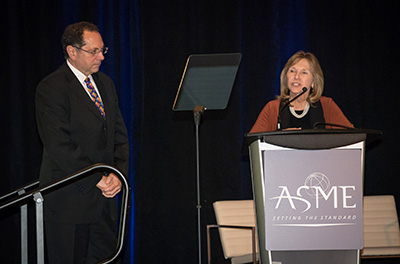
During a special Member Assembly on June 3 at the ASME Annual Meeting in Vancouver, Canada, ASME volunteers had the opportunity to learn about some of the programs and products that are being developed in two of the five core technology areas that the Society has identified as key to its future success. The session, titled “What’s Happening at ASME,” was inspired by a program that was launched earlier this year to inform staff members on recent strategy-related activities that are currently underway at ASME.
ASME President Charla Wise provided opening remarks for the lively session, pointing to the recent strides ASME volunteers and staff have made toward helping the Society achieve its strategic objectives. These include the adoption of an Integrated Operating Plan that ensures that the Society’s operations and budgets are aligned, increased collaboration between the Society’s departments and volunteer groups on projects and programs, and the launching of new products, courses, standards and events in the five core technology areas: manufacturing, clean energy, bioengineering, pressure technology and robotics.
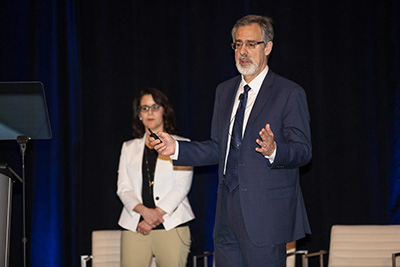
“As we begin to see our strategic programs take shape, there’s an excitement in the air,” Wise said. “This change is necessary for ASME to remain competitive and relevant into the 21st century.”
Wise introduced ASME’s new Executive Director, Tom Costabile, who also welcomed the audience, and then introduced Jeff Patterson, ASME’s chief operating officer, who took the stage to offer a brief overview of the five core technologies before introducing the session’s four presenters: Prof. Ross Ethier and Christine Reilley, who discussed the Society’s activities in the area of bioengineering, and Gloria Wiens and Raj Manchanda, who talked about the work ASME was pursuing related to manufacturing.
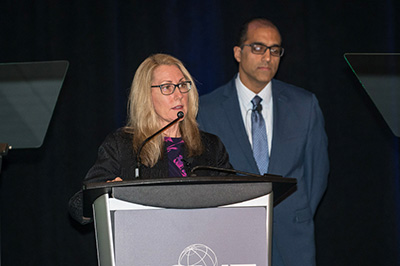
Dr. Ethier, the Lawrence L. Gellerstedt Jr. Chair in Bioengineering at Georgia Institute of Technology and chair of the ASME Bioengineering Division, provided the audience with some history of the Bioengineering Division — which began as the Human Factors Division in 1956 — and pointed out some of the division’s recent initiatives, which included changing the bylaws and composition of the executive committee to include more industry members and encourage diversity; sponsoring an ASME Congressional Fellowship beginning this summer; acting as a resource for ASME staff and the Technology Advisory Panels (TAPs); and creating new bioengineering-related content.
Ethier and Reilley also discussed an important new resource for bioengineering content: ASME’s Alliance of Advanced Biomedical Engineering (AABME), an initiative designed to bring together members of the biomedical engineering community to encourage collaboration and information sharing across disciplines. Launched in April 2017, the AABME.org website serves as a reliable neutral convener and content provider, bridges the gap between research and industry, and offers a wide range of professional and networking resources.
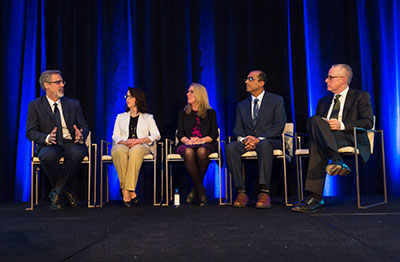
Christine Reilley, ASME’s business development director for healthcare, discussed several events and programs for the bioengineering community that have already been introduced, including the new event “AABME CONNECT: Where Biomedicine and Engineering Come Together,” held last month in Minneapolis, as well as the “Transforming Imaging Data Into Treatment Planning” standards gap analysis workshop, which was co-hosted with the Society for Thermal Medicine in May. Upcoming initiatives include the “Maturing Cell Therapy Logistics” workshop, to be held July in Washington, D.C., in collaboration with the Organ Preservation Alliance and the Society for Cryobiology; the eLearning course “Cellular Therapy Manufacturing for Engineers,” which will launch this summer; and the establishment of Bioengineering Lexicon, a tool that identifies and defines terms with different meanings among engineers, clinicians and scientists. The Bioengineering Lexicon will launch on AABME.org in late 2018.
Gloria Wiens of the Design Materials & Manufacturing Segment Leadership Team (DMM SLT) and Raj Manchanda, director, business development, Manufacturing & Robotics at ASME, next discussed ASME’s activities related to the field of manufacturing. Dr. Wiens provided an overview of the DMM SLT, which is a subject-matter-expert team comprised of design and manufacturing authorities from industry, academia, government and ASME staff. The DMM SLT is currently taking on a number of new initiatives, including developing a plan to improve the conference paper review process, communicating more frequently with technical divisions, and identifying subject matter experts for e-Learning courses, industry forums, Technology Advisory Panels, and other new initiatives.
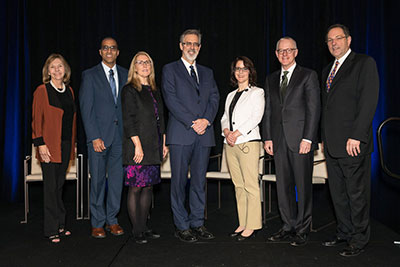
Manchanda next provided a manufacturing market overview, discussing the business opportunities that ASME sees in the sector. Additive manufacturing (AM) is a market that shows particular promise, Manchanda said, noting that global growth for the market is projected at approximately 25 percent between 2017 and 2020, according to Credit Suisse estimates, and that AM has particular opportunities for growth in the areas of customer specific design, lightweight structures, part consolidation, and on-demand localized production.
ASME is currently developing a number of products and services for the manufacturing sector, Manchanda said, including a Design for Additive Manufacturing with Metals eCourse to be launched in the third quarter of this year; the new Additive Manufacturing Leadership Summit, which will be held at PTC LiveWorx in Boston this month; and the development of several standards, including the Y14.46 Product Definition for Additive Manufacturing standard, a draft of which was issued last year.
Related Content
ASME Membership (1 year) has been added to your cart.
The price of yearly membership depends on a number of factors, so final price will be calculated during checkout.




